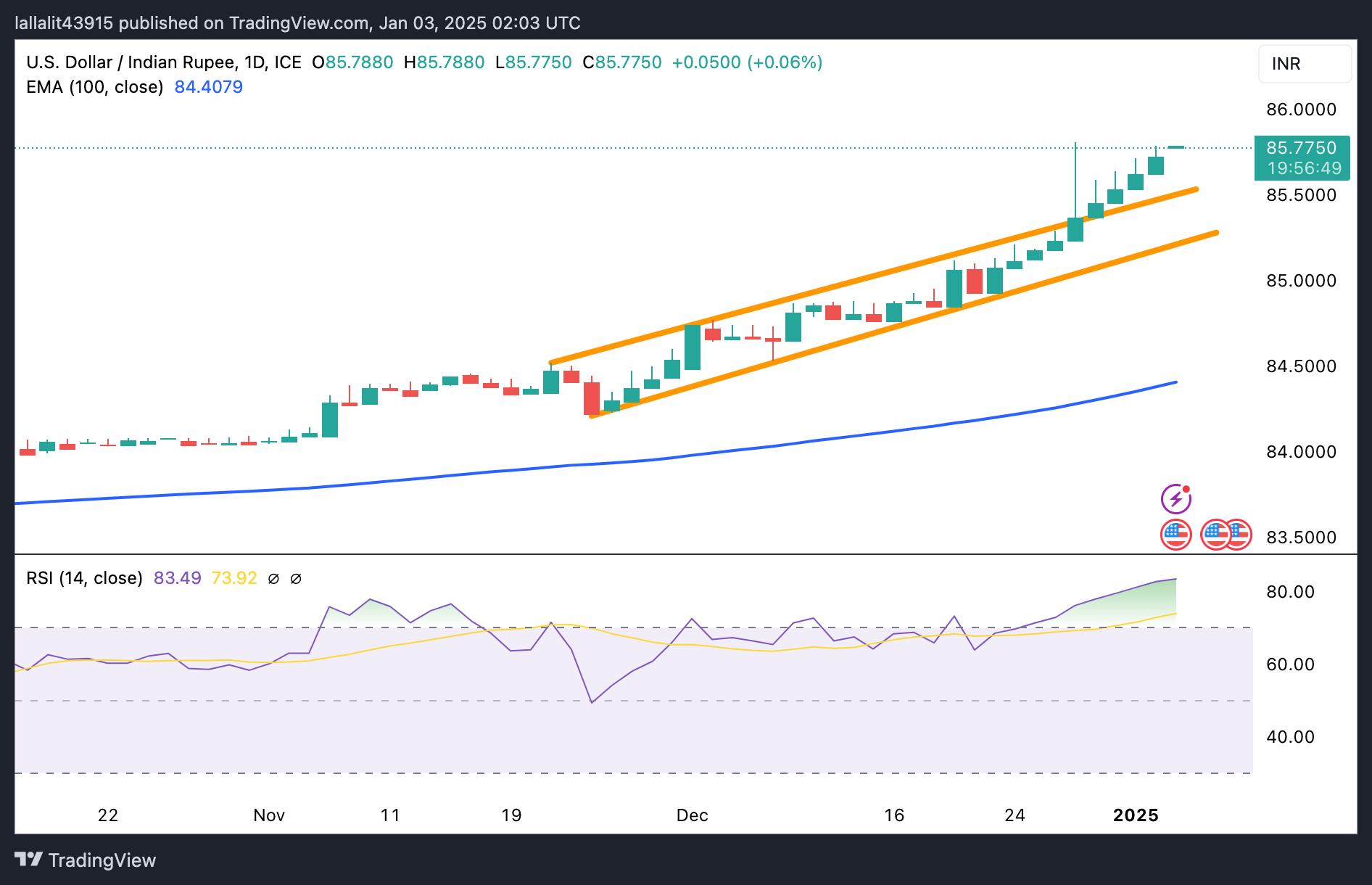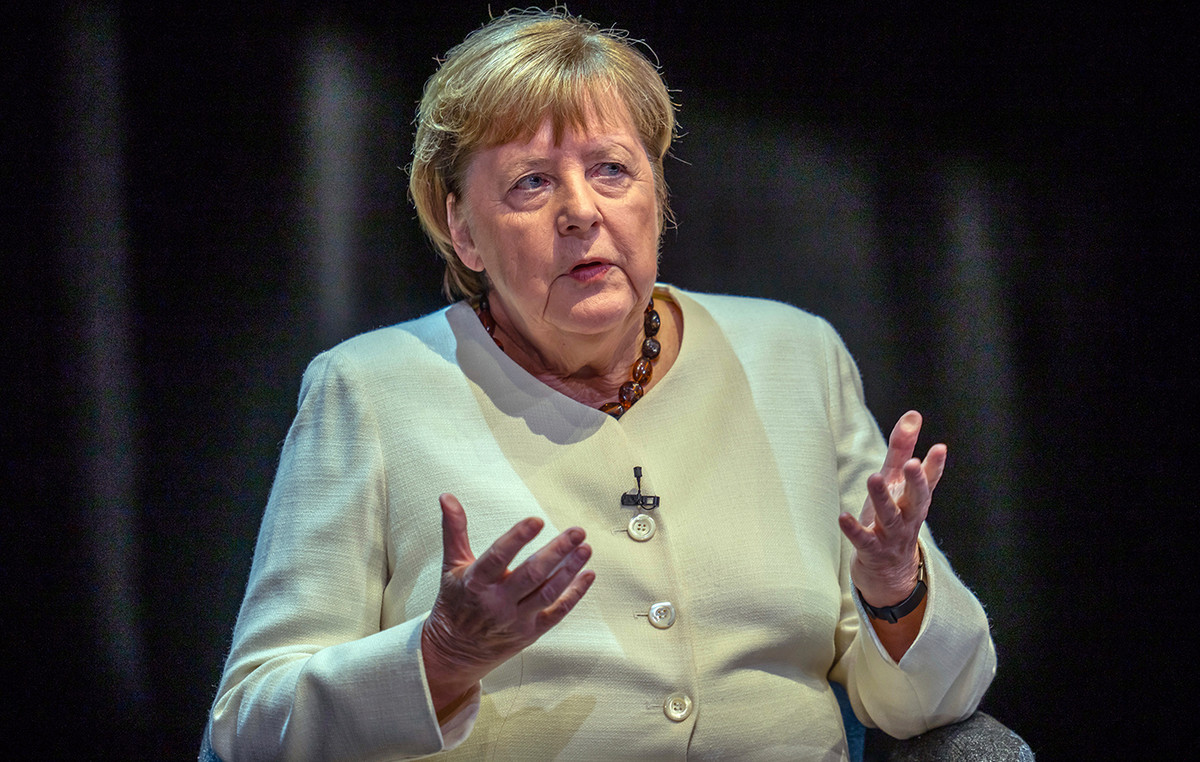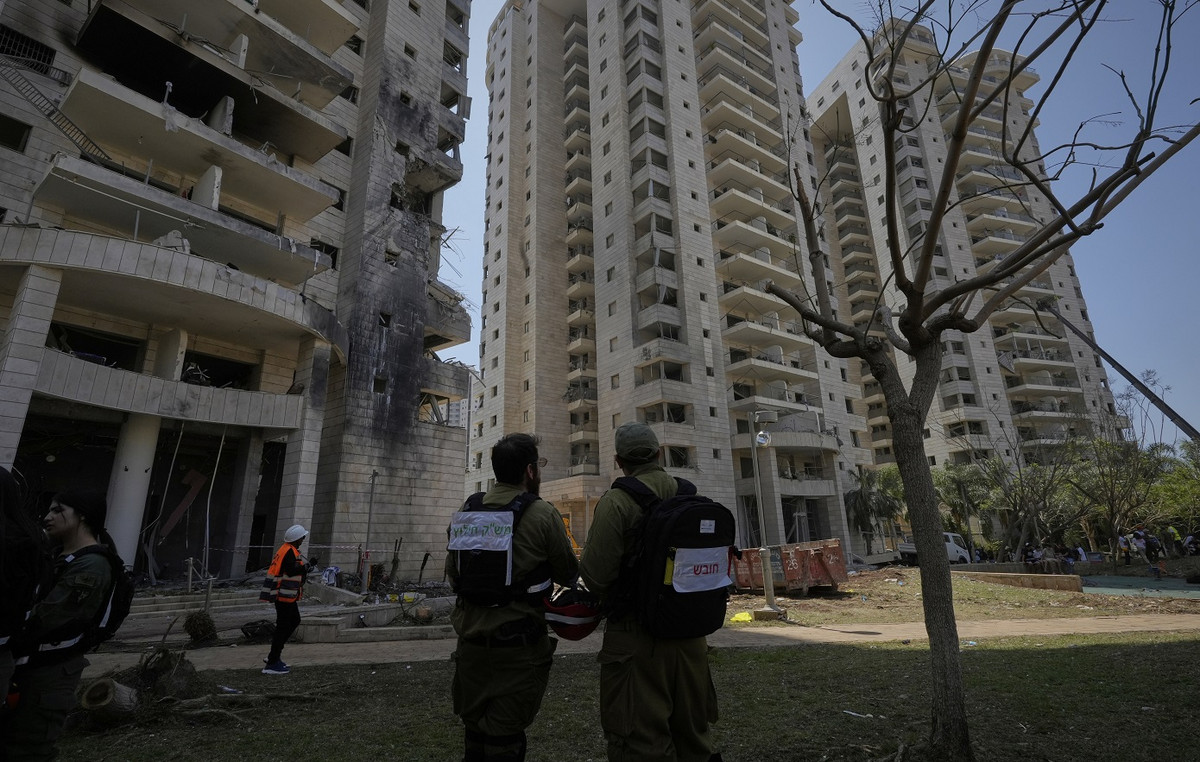- The Indian Rupee attracts some sellers in the Asian session on Friday.
- The continued strength of the USD and concerns over India’s economic slowdown continue to undermine the INR.
- The December US ISM Manufacturing PMI will be closely monitored.
The Indian Rupee (INR) extends decline on Friday after closing at its weakest level on record for the eighth consecutive session. The local currency remains under pressure as strong demand for the US Dollar (USD) in the non-deliverable forward (NDF) market has expanded arbitrage with the Indian onshore market. Furthermore, the disappointing growth rate in India, a wider trade deficit and a slowdown in capital flows are contributing to the decline in the INR.
However, the Reserve Bank of India (RBI) could intervene to sell USD and offer short-term relief for the INR. Traders await December US ISM Manufacturing PMI for fresh impetus, due out on Friday. Additionally, Federal Reserve Bank of Richmond President Thomas Barkin will speak later in the day.
Indian Rupee weakens further despite RBI intervention
- The Rupee is likely to see a slight depreciation in 2025, driven by volatile foreign portfolio investment (FPI) flows and a potentially stronger US Dollar, according to the Bank of Baroda report.
- State banks were seen selling USD worth between $800 million and $1 billion, traders said.
- India’s HSBC Manufacturing PMI hit a 2024 low in December, falling to 56.4 from 57.4 in November. This figure was weaker than the 57.8 expected.
- “Indian manufacturing activity ended a strong 2024 on a soft note amid further signs of a slowing trend, albeit moderate, in the industrial sector. The rate of expansion of new orders was the slowest of the year, which suggests weaker growth in future output,” said Ines Lam, an economist at HSBC.
- U.S. initial jobless claims for the week ending Dec. 28 decreased to 211,000, compared to the previous week’s figure of 220,000 (revised from 219,000), according to the U.S. Department of Labor. (DOL) on Thursday. This reading was below the market consensus of 222,000.
USD/INR maintains firm tone, overbought RSI warrants caution for bulls
The Indian Rupee is trading with a negative bias on the day. According to the daily chart, the strong uptrend of the USD/INR pair remains intact since the pair broke above the ascending trend channel last week. The path of least resistance is to the upside as the pair remains above the 100-day EMA.
However, the 14-day Relative Strength Index (RSI), reading above 70, suggests an overbought condition and signals that further consolidation cannot be ruled out before positioning for any near-term appreciation in the USD/ INR.
In the bullish case, the first barrier to the upside emerges at the all-time high of 85.81. Sustained trading above the mentioned level could pave the way towards the psychological mark of 86.00.
On the downside, the initial support level for USD/INR lies at the resistance-turned-support level of 85.54. A break of this level could see a drop to 85.00, the round figure. The next contention level to watch is the 100 day EMA at 84.40.

Indian Rupee FAQs
The Indian Rupee (INR) is one of the currencies most sensitive to external factors. The price of crude oil (the country relies heavily on imported oil), the value of the US Dollar (most trade is done in US dollars), and the level of foreign investment are all influential factors. The Reserve Bank of India’s (RBI) direct intervention in the foreign exchange markets to keep the exchange rate stable as well as the level of interest rates set by the RBI are other important factors influencing the Rupee. .
The Reserve Bank of India (RBI) actively intervenes in foreign exchange markets to maintain a stable exchange rate and help facilitate trade. Furthermore, the RBI tries to keep the inflation rate at its target of 4% by adjusting interest rates. Higher interest rates tend to strengthen the Rupee. This is due to the role of the “carry trade”, in which investors borrow in countries with lower interest rates to park their money in countries that offer relatively higher interest rates and profit from the difference.
Macroeconomic factors that influence the value of the Rupee include inflation, interest rates, economic growth rate (GDP), trade balance and foreign investment inflows. A higher growth rate can lead to more investment abroad, increasing demand for the Rupee. A less negative trade balance will eventually lead to a stronger Rupee. Higher interest rates, especially real rates (interest rates minus inflation) are also positive for the Rupee. A risk environment can lead to higher inflows of foreign direct and indirect investment (FDI and FII), which also benefit the Rupee.
Higher inflation, particularly if it is comparatively higher than other countries, is generally negative for the currency as it reflects a devaluation through excess supply. Inflation also increases the cost of exports, leading to more rupees being sold to buy foreign imports, which is negative for the Indian Rupee. At the same time, higher inflation usually leads the Reserve Bank of India (RBI) to raise interest rates and this can be positive for the Rupee, due to increased demand from international investors. The opposite effect applies to lower inflation.
Source: Fx Street
I am Joshua Winder, a senior-level journalist and editor at World Stock Market. I specialize in covering news related to the stock market and economic trends. With more than 8 years of experience in this field, I have become an expert in financial reporting.






